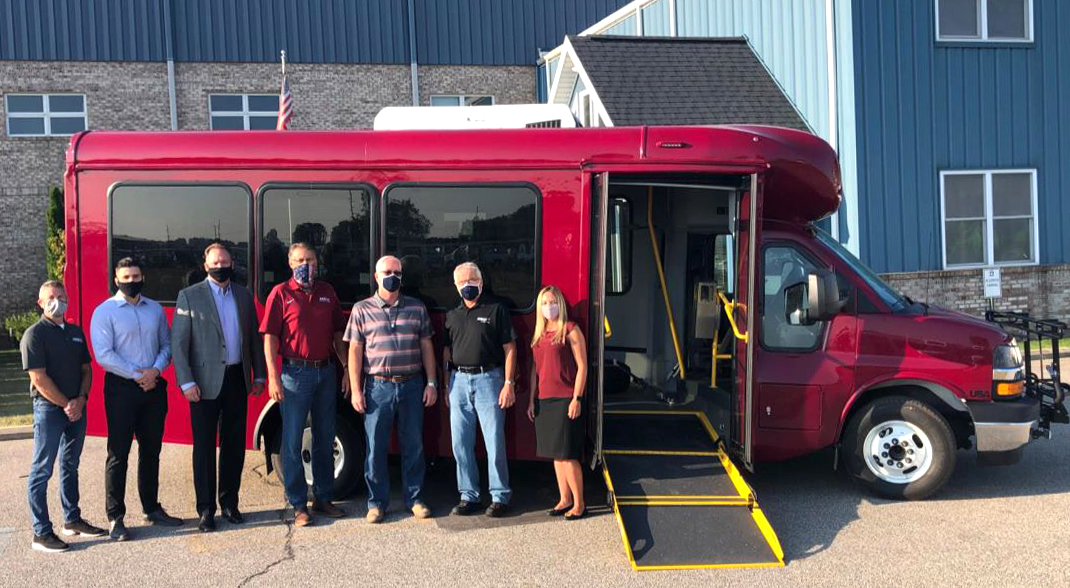ARBOC Specialty Vehicles, a subsidiary of NFI Group, has announced that it will be the first to include antimicrobial sidewall paneling from Polser USA for the interiors of its buses. With downtime for sanitation as a significant concern for transit bus organizations, this safety upgrade brings a new highly effective, no-maintenance feature to customers. Cleaning and sanitizing will continue to be an ongoing chore for transit buses and fleets well into the future, and Polser’s antimicrobial interior solution is intended to bring significant advantages.
 L to R: ARBOC Regional Sales Manager Mike Anglemyer, Polser USA Operation Manager Adam Glanders, Polser USA President Greg Glanders, ARBOC General Manager Doug Minix, ARBOC Regional Sales Manager Dan Flynn, ARBOC VP of Engineering Barry Hines, and ARBOC VP of Sales & Marketing Kim Yoder
L to R: ARBOC Regional Sales Manager Mike Anglemyer, Polser USA Operation Manager Adam Glanders, Polser USA President Greg Glanders, ARBOC General Manager Doug Minix, ARBOC Regional Sales Manager Dan Flynn, ARBOC VP of Engineering Barry Hines, and ARBOC VP of Sales & Marketing Kim Yoder
The fiber-reinforced panels, called Polser AMB, feature a permanent coating that the company likens to a microscopic bed of nails, and claims that it actively and instantaneously kills 99.9 percent of microorganisms on contact. Polser states that the coating works by disrupting the cell membrane, eliminating any possibility of mutation or adaptation, and is non-toxic without a need for any chemical solutions to function.
ARBOC’s specialty is low-floor accessible buses tailored to improve the transit experience of all passengers. The step-free design of the ARBOC lineup of cutaway and medium-duty buses speaks to the company’s passion to provide the safest bus on the market.
“In these uncertain times, sanitation is a particularly major concern for most of the population that our bus customers serve. We are pleased to provide an effective feature intended to efficiently increase safety and sanitation,” said ARBOC General Manager Doug Minix.
The antimicrobial walls also have a positive effect on the hygiene of other items inside the bus. Polser claims that AMB works by using a positive molecular charge to both attract in and pull pathogens down the nano-swords structures.
“Because AMB is so effective at killing pathogens on contact, there are fewer active pathogens nearby in both the air and on the floor,” said Polser President Greg Glanders. “Pathogens move between surfaces and also through the air, where they can settle on another surface. In short, pathogens move around and multiply. Our walls actually pull in and destroy both surface and nearby airborne pathogens, killing them before they can multiply and contaminate other surfaces.”
Visit polser.com or arbocsv.com for more information.
[09.15.20]

